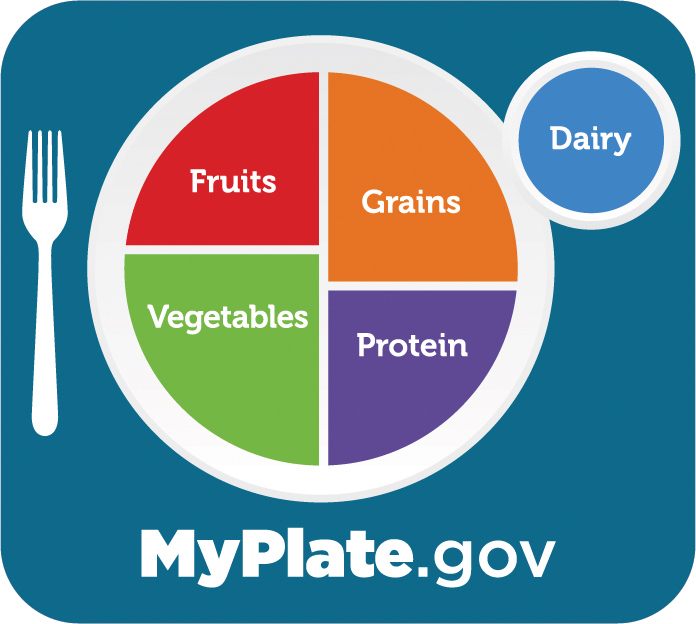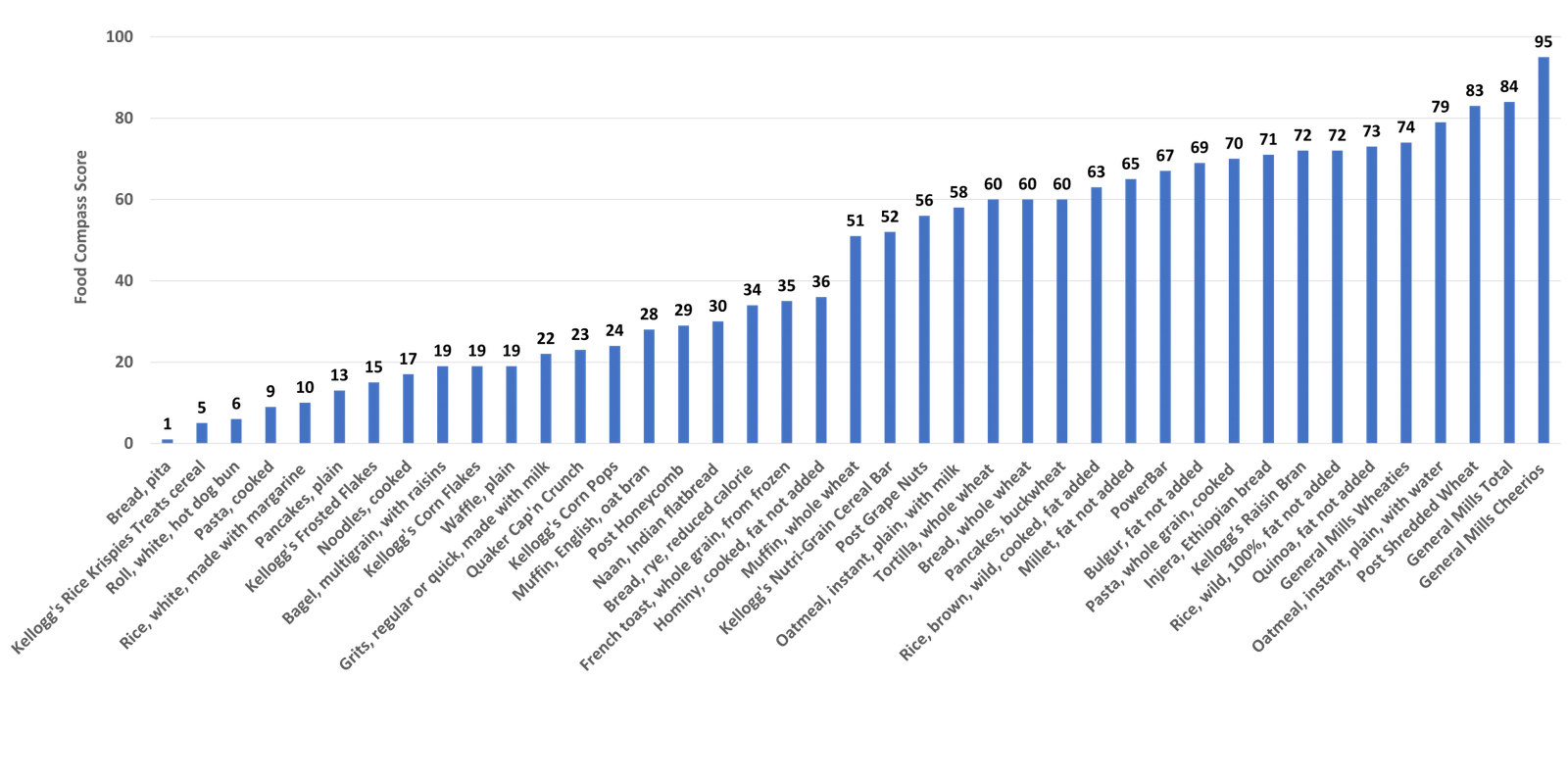Healthy eating can be tough. Food labeling is confusing, and sometimes outright misleading, and many people in the U.S. don’t have much background knowledge on good nutrition practices. Food guides—from the quintessential USDA food pyramid to Tufts University’s algorithm-driven food compass—aim to support people to make healthy decisions about food day-to-day. Increasingly, food guides are also seen as an opportunity to encourage more sustainable food choices.
Visual food guides over the years
Visual food guides produced by the U.S. Department of Agriculture (USDA) have taken many forms over the years. In 1977, new research on chronic disease drove a shift from encouraging adequate nutrient intake to counseling people to avoid eating too much fat, sugar, and sodium.
The iconic USDA food pyramid was introduced in 1992. However, in the years since, research found that it did not yield better health outcomes. And according to a research article published in the International Journal of Health Services, the pyramid was forged by political influence at the expense of health considerations: “since 1977, for example, under pressure from meat producers, federal dietary advice has evolved from ‘decrease consumption of meat’ to ‘have two or three (daily) servings.’”

A more visual approach with MyPlate
The current visual food guide used by the USDA is known as MyPlate, a simple, visual look at what a healthy plate full of food looks like. MyPlate shows half the plate taken up by fruits and vegetables, with small portions of grains and protein. While the food pyramid was well known, the sharing of MyPlate seems to have had less success. It seems that few Americans are even aware of the existence of MyPlate.
The visual used as a basis for MyPlate was originally developed by experts at Harvard T.H. Chan School of Public Health and Harvard Medical School. These experts critiqued many of the modifications made by USDA in adopting and adapting the original research-based graphic as it was subjected to political pressures. For example, they take issue with the inclusion of dairy in the place of water, as well as removing guidance on limiting red meat.

Rating food nutrition with an algorithm
In 2021 Tufts University released the Food Compass, a food rating system that uses an algorithm to evaluate foods across 9 domains, including nutrient rations, processing, vitamins, and fiber. The aim was to help people and policymakers make sense of the complicated nature of nutrition, especially in the context of chronic disease and confusing and misleading labeling.
However, in 2023 a study was published in the Journal of Nutrition critiquing the overall approach of all nutrient profiling systems as reductionist. They found that the Food Compass in particular yields “results that fail to discriminate for common shortfall nutrients, exaggerate the risks associated with animal-source foods, and underestimate the risks associated with ultra processed foods.”
Taking sustainability into account
Visual food guides and food ranking systems aren’t just opportunities to improve health - they can also influence the sustainability of diets. In 2009, Sweden was the first country to include sustainability considerations in their food guide, with recommendations to avoid bottled water and eat locally produced food. By 2016, Brazil, Qatar, and Germany had all included environmental concerns in their food guidelines. This same year, the Food and Agriculture Organization of the United Nations (FAO) and Oxford wrote a review of the inclusion of sustainability in national dietary recommendations. This review found that despite evidence that individual dietary choices can have an impact on slowing climate change “government action is lagging behind.”
A modeling study by Oxford University in 2020 similarly found that 98% of studied national guidelines “were not compatible with at least one of the global health and environmental targets.” For example, guidance in China, the United Kingdom, and U.S. were all “incompatible with the climate change, land use, freshwater, and nitrogen targets.” In 2023, Cornell University found that still less than half of dietary guidance around the world includes sustainability considerations.

Improving U.S. dietary guidelines
Progress may be slow, but many countries are now including considerations on sustainable foods. For example, Denmark recommends “eat less meat, choose legumes and fish.” And dietary guidelines are being accompanied by real shifts - in Germany, a historically meat-heavy diet is seeing shifts as people move toward more plant-based meals.
But U.S. food guidance is particularly lacking when it comes to sustainability, with recommendations around climate and food being removed from the final version of dietary guidelines issued in both 2015 and 2020 due to pressure from the meat and dairy industry and Republican lawmakers.
Climate and nutrition experts would like to see U.S. food guidance advising the consumption of tofu, lentils, beans, nuts, or seeds in place of meat, poultry, and eggs. They also suggest drinking water instead of milk. These same recommendations could help improve health and nutrition, reduce our emissions, and decrease negative impacts caused by industrial meat production, such as pollution, pandemic risk, and animal cruelty.
